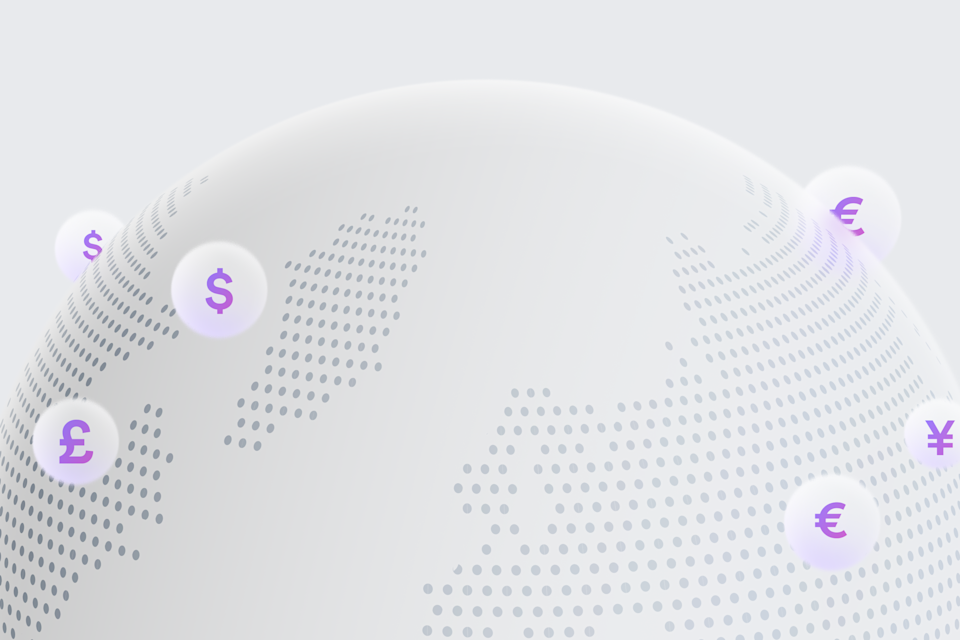What’s a payments API and how does it work?

Zachary Filler
Airwallex Platform Strategist

If you work in a tech-adjacent role or read startup layoff stories in TechCrunch as a guilty pleasure, you’ve probably heard the term API Integration. You know it’s sold by tech companies, but how are they all selling the same thing? Could it apply to you, and how do you run your business?
So, before jumping into payments, let’s talk about what an API is. It stands for “Application Programming Interface,” which is an intermediary layer that connects the edges of different software applications. Every time you retweet, fire off an email, or look for restaurants near you on your phone, you’re using an API.
How APIs work
The main job of the software on your phone is to present the data and results of these applications to you in an understandable way. But the response to the action you took (your retweet, your search for restaurants, etc.) is happening on one or more servers of the application you called upon, not on your device.
This division between the software on your phone and the back-end software of the app illustrates the need for two separate systems, even for the same app! This is where the terms “front-end” and “back-end” developers come from, and also why we need an intermediary software layer that allows the front-end to “programmatically” interface with the back-end, aka the API – Application Programming Interface.
In this case, an “internal” API is the intermediary layer between your phone and the app. It connects the two ends of software within the same application. APIs are internal when they’re within a business’s software system.
Now, let’s take it one step further. What if one app wanted to leverage the software, data, and tools of other applications? Let’s use the example of a flight aggregator (e.g., Skyscanner, Kayak, Google Flights). All of the airlines want their flights to show up in search results, so they allow the aggregators to access data on their flights. How? Via their API endpoints!
In this case, an “external” API is the intermediary layer because the aggregators’ software is controlled separately from the airline’s. APIs are external when they’re designed for third-party developers or partners.
These aggregators host the software interface that allows travelers to input the range of dates and locations they want, access all the airline data via their APIs, run some fancy algorithms to find the fastest/cheapest routes, and then sell the presentation of these routes to us.
APIs exist for everything now, and it’s almost by definition part of what it means to be a tech company. Tech companies span communications, entertainment, health, payments, etc. But every single one uses and/or sells APIs as part of their business.
Money in the modern era is digital
[If you already know how APIs work but want to know more about how they work in payments applications, skip to here.]
Theoretically, it should be as easy to send someone a payment as it is to send them an email. After all, we all do that for free every day. However, governments and institutions understandably want to prevent misuse of payments by bad actors (e.g., sanctioned countries, criminals, tax evaders, etc.). As a result, they’ve introduced a host of regulations and controls on sending money digitally, especially across international borders.
In the 1970s, a consortium of world financial leaders created the Society for Worldwide Interbank Financial Telecommunications (SWIFT) to facilitate navigating the international banking system. This was an incredible step forward in allowing regular bank users to navigate the host of international regulations surrounding cross-border payments.
Nevertheless, SWIFT is now almost 50 years old and provides a terrible user experience, including costly fees per payout, days of waiting for each payment to arrive, exorbitant FX rates on most transactions, and often intermediary banks taking mysterious cuts before your payment reaches its final destination.
[Related: Six surprising reasons your bank transfer is delayed]
Removing the barriers to international payments
Airwallex and like-minded fintech companies have made it their mission to remove these barriers for international payments so that we can take advantage of the opportunities in a more interconnected world with a thriving global economy.
Some payment infrastructure options, like crypto, want to bypass this infrastructure entirely to avoid government interference. Airwallex believes in optimizing payment rails within the legal oversight of world governments, and we’ve done this by painstakingly creating a digital and financial network that skips some of the costly middlemen and procedures of legacy banking networks while remaining fully compliant with international rules and regulations.
As part of our financial infrastructure, Airwallex has funds available for immediate payout in countries all over the world. For example, if someone in the US wants to send a payment to Singapore, we move money directly from our funds in Singapore to the end beneficiary through the local equivalent of ACH (in Singapore it’s called Giro or Fast) without going through intermediary banks.
[Related: Are you paying too much to be global? How to sell in foreign markets without paying too much in fees]
Cheaper, faster international payments
Using local “rails” results in cheaper, faster, and more successful payments (unlike SWIFT).
A rail is a payment method. For example, in the U.S. ACH is a rail. In Mexico, SPEI is a rail. Airwallex integrates with local banks and financial institutions to allow users of our technology to access the best local rails in each region. Airwallex SMB customers can issue local payments directly from our WebApp.
API customers can take speed and convenience to the next level. You’ll not only avoid international transaction fees, but you can automate the entire process and fire off thousands of payments per second. Whether you have a host of suppliers, contractors, marketplace participants, or any other beneficiary, your internal workflow system can tap our APIs to send the fastest and most cost-effective payment.
Airwallex lets you send payments cheaply, quickly, and securely by integrating with the financial infrastructure of banks all over the world. We’ve done all the heavy lifting to make sending international payments as simple as sending an email.
To learn more about Airwallex and how its payments API can help your business grow and thrive, check us out here.

Zachary Filler
Airwallex Platform Strategist
Zachary Filler holds degrees in Mathematics-Statistics and Chinese from Columbia University, and spent brief stints working for investment banks like Citibank and Goldman Sachs before his current role in Enterprise Strategy at Airwallex. Zach loves helping businesses access global financial services more effectively, but also plays a lot of chess in his free time, so you might spot him at the Mechanic's Institute in San Francisco!
Posted in:
Online payments
